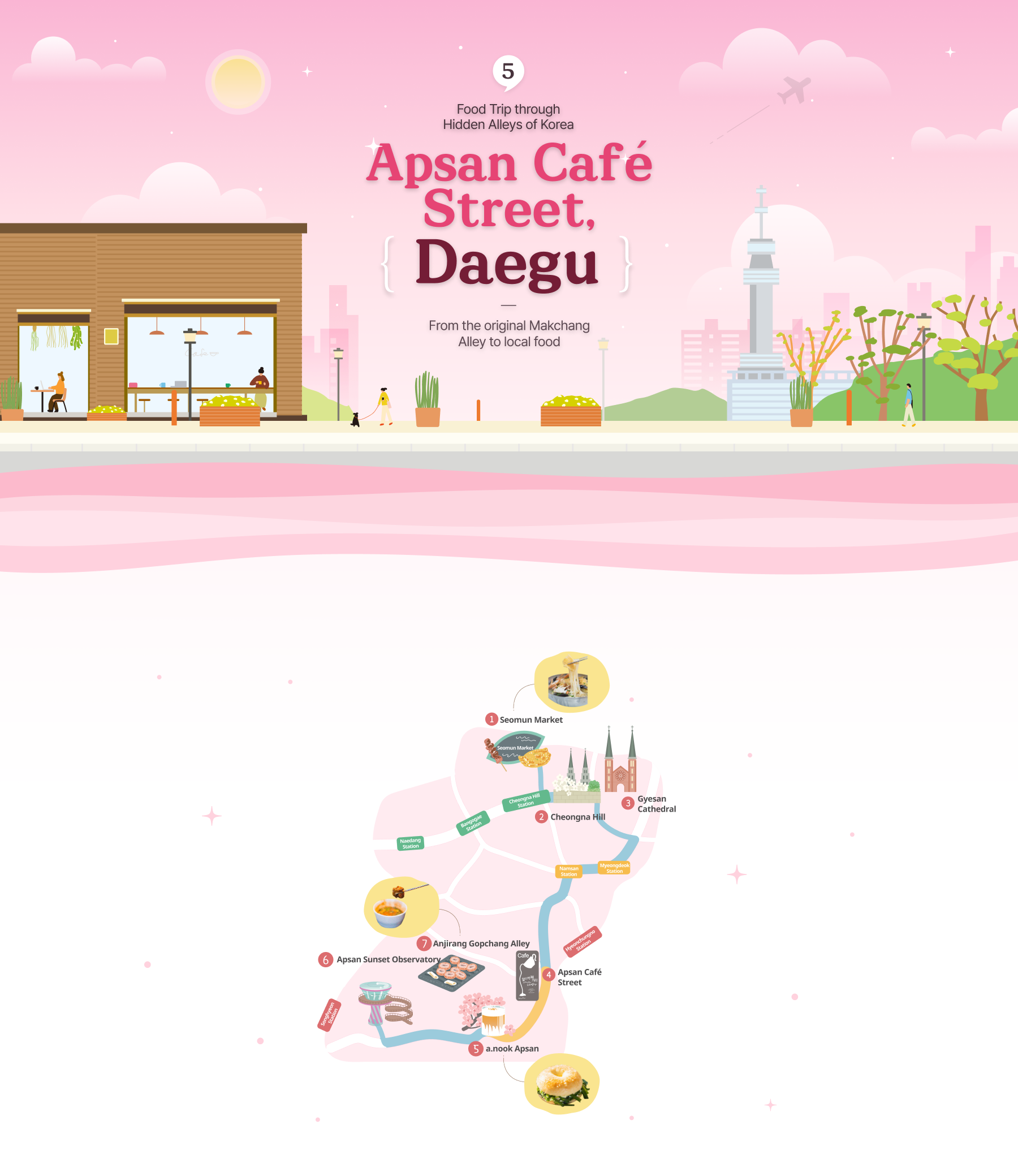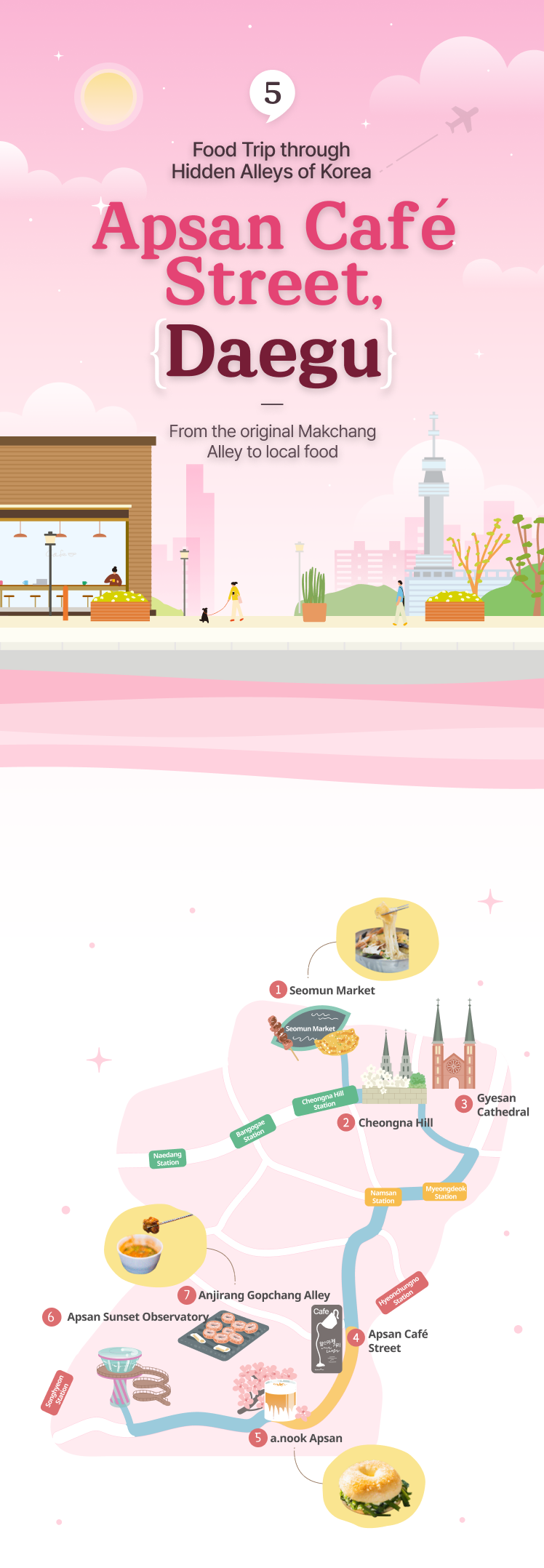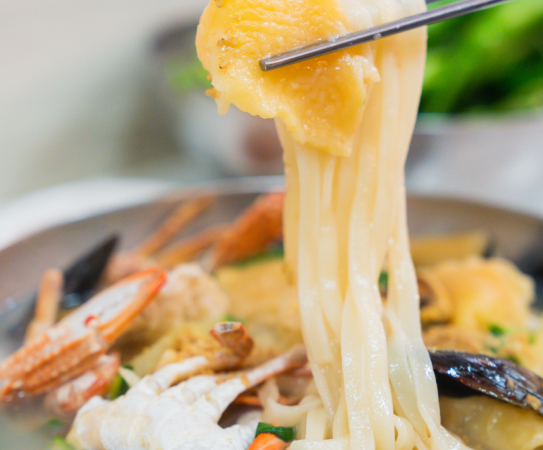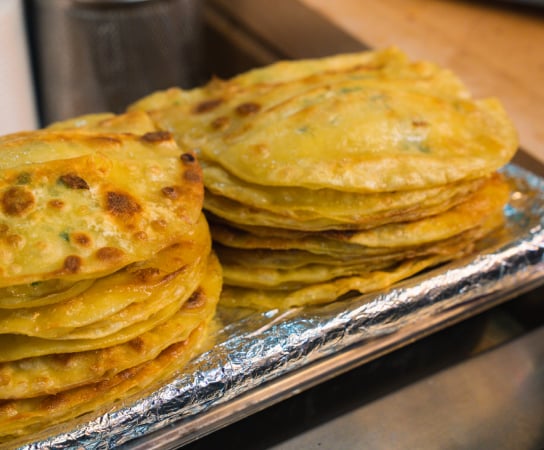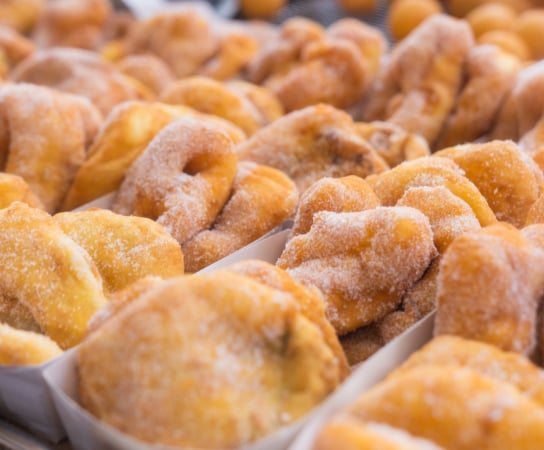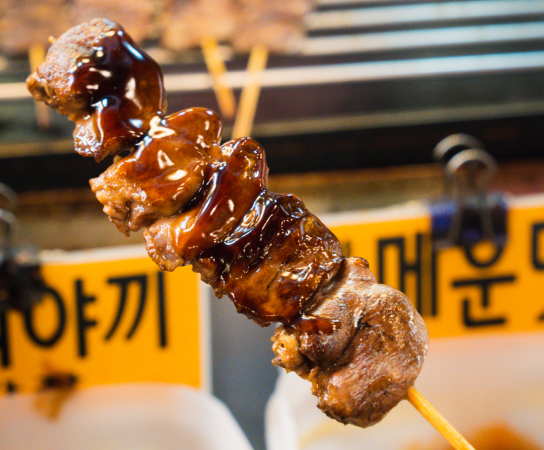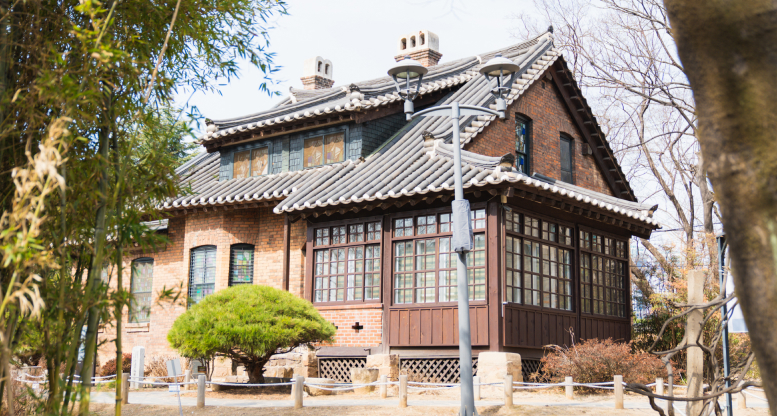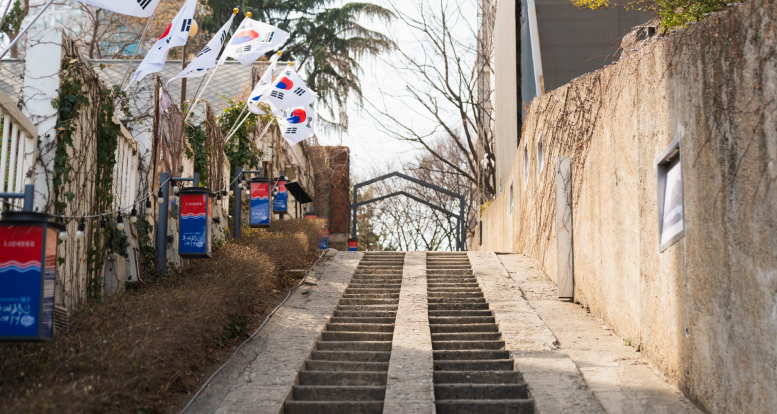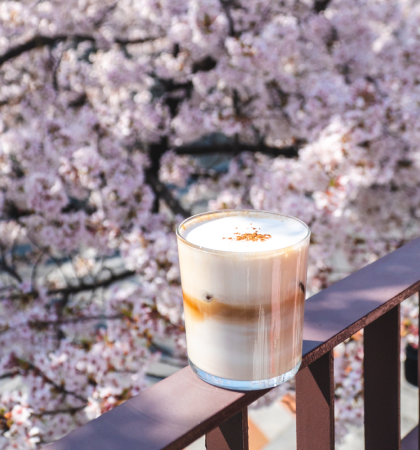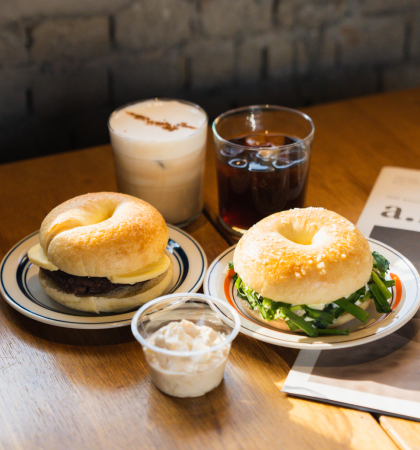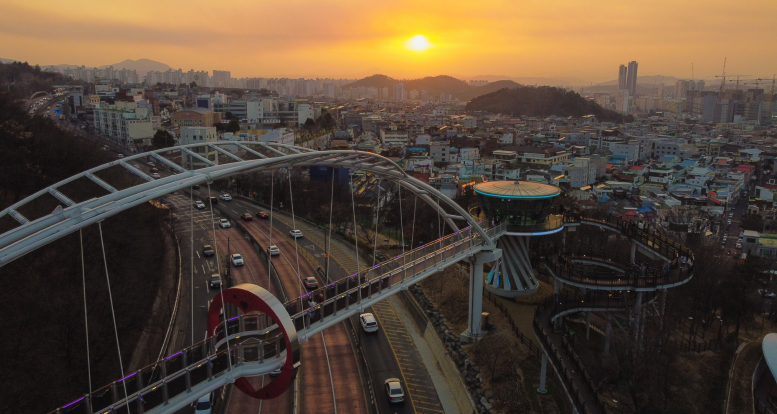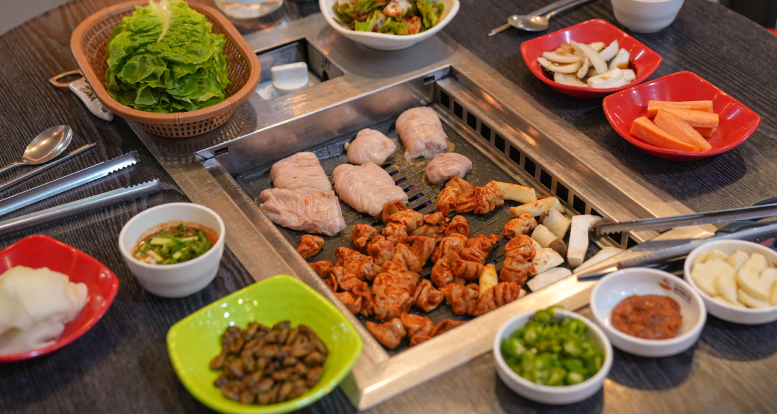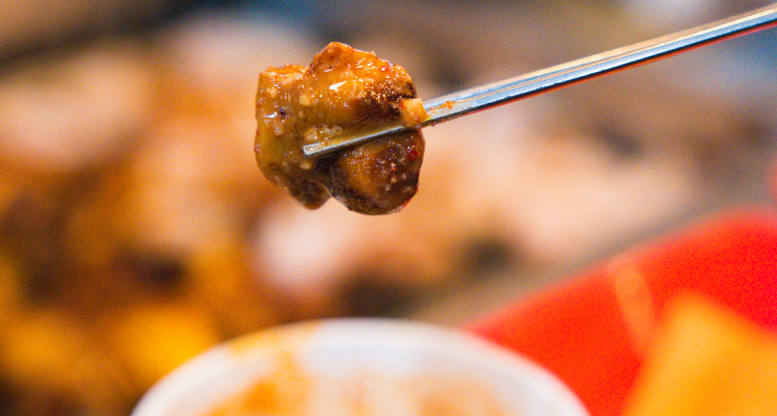Cheongna Hill served as a residential area for Christian missionaries in the early 20th Century. Its name, Cheongna, comes from the green (cheong) vines (na) planted by the missionaries. Missionary houses like Switzer’s House and Blair’s House still remains on the hill. The missionaries themselves are laid to rest around their houses with their families.
![Missionary House]()
![Missionary's house Switzer's house located on the Cheongna Hill]() Switzer’s House
Switzer’s House
These missionary houses built in the 1910s provide examples of early Western-style architecture in Daegu. For instance, Switzer’s House integrates giwa (Korean tile roof) atop a bungalow-style red brick house in the American style as an example of harmony between Korea and the West.
It is currently used as a museum dedicated to the missionaries in Daegu. The first floor houses Bibles, artifacts, and photographs, while the second floor houses Biblical items purchased in Israel.
![90 Stairs]()
![3.1 Movement Staircase on the Cheongna Hill The 90 Stair, the center of the independence movement during Japanese colonial era]() 90 Stairs
90 Stairs
On March 1, 1919, a peaceful march for Korea’s independence was held, then under Japanese occupation. The march began in Seoul and spread throughout the peninsula like wildfire.
Daegu served as the regional center of the March 1 Independence Movement in the Gyeongsangbuk-do region. Activists participating in the march had passed through these stairs, leaving an indelible mark.
Take part in the AR video experience in the middle of the stairs to feel their resolute stand against tyranny.

